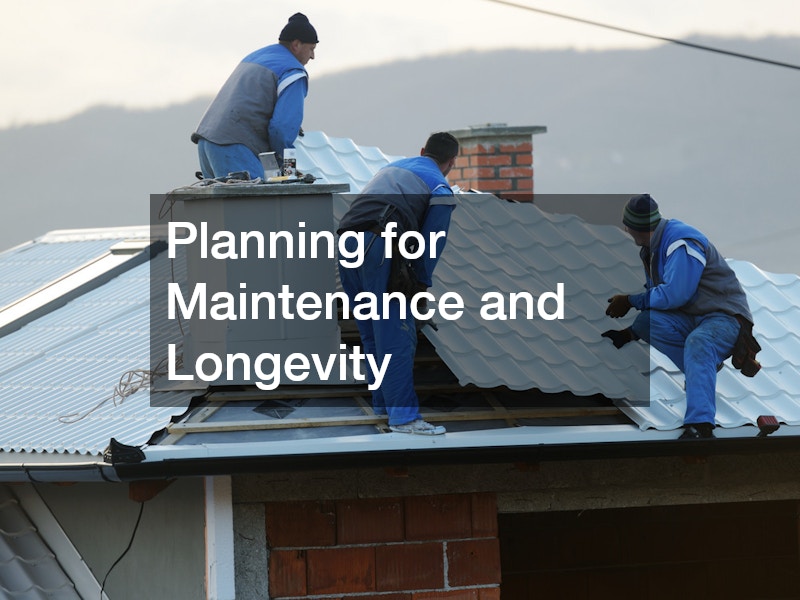Selecting the right roofing solution for a commercial property is a critical decision that impacts the building’s longevity, energy efficiency, and maintenance costs. Unlike residential roofing, commercial roofing presents unique challenges, including flat or low-slope designs, heavy foot traffic, and specific material requirements. With multiple options available, property owners and facility managers must weigh factors like durability, cost, installation complexity, and long-term maintenance.
Making the right choice ensures that the building remains safe, functional, and cost-effective for years to come.
Understanding Roofing Materials
Commercial buildings require materials that can withstand environmental stressors and heavy use. Common options include TPO, EPDM, PVC, modified bitumen, and built-up roofing systems. Each material comes with its own set of advantages and drawbacks. For instance, TPO roofing is known for its energy efficiency and resistance to UV rays, while EPDM offers durability and a long lifespan at a relatively lower cost. Modified bitumen provides excellent waterproofing, making it ideal for areas prone to heavy rainfall. By understanding the unique benefits of each material, property owners can select a solution that aligns with the building’s structural needs and budget constraints.
Material choice also affects maintenance requirements. Some roofing materials are more susceptible to punctures or tears, particularly on flat roofs, which can collect water or debris. Others may require specialized cleaning or inspection routines to maintain warranty coverage. Considering these factors early in the decision-making process helps avoid costly repairs and ensures the roof performs optimally over its expected lifespan. Being aware of these maintenance needs also allows property owners to plan budgets and resources more effectively, preventing unexpected expenses.
Evaluating Installation and Labor Costs
The installation process is another critical consideration when choosing a commercial roofing solution. Flat or low-slope roofs often demand more complex installation methods than traditional pitched roofs, which can impact labor costs. Some materials, such as single-ply membranes, may require fewer labor hours, while built-up systems often involve multiple layers and specialized equipment. Understanding the time, expertise, and resources required for installation helps property owners plan for upfront costs more accurately.
Labor availability and contractor experience should also factor into the decision. Commercial roofing projects benefit from skilled professionals familiar with local building codes, safety requirements, and material-specific installation techniques. Hiring experienced contractors not only ensures a proper installation but can also prevent costly mistakes or structural issues down the line. Investing in quality labor upfront often translates to lower long-term maintenance costs and fewer emergency repairs. Additionally, working with reputable contractors can provide peace of mind, knowing that the project will meet both safety standards and quality expectations.
Considering Energy Efficiency and Sustainability
Energy efficiency has become a priority for many commercial property owners, both to reduce operational costs and to meet environmental standards. Roofing materials with reflective surfaces, such as white TPO or reflective coatings, can significantly reduce heat absorption, lowering cooling costs in warmer climates. Green roofing solutions, including rooftop gardens or solar panel integration, offer additional energy savings and environmental benefits.
Sustainable roofing options are increasingly relevant for businesses aiming to improve their environmental footprint or achieve certifications like LEED. While initial costs may be higher for eco-friendly materials, long-term savings on energy bills and potential tax incentives make these options attractive. When evaluating roofing solutions, property owners should balance upfront investment with anticipated energy savings and environmental impact. Additionally, choosing sustainable options can enhance a company’s public image, appealing to clients and stakeholders who value environmental responsibility.
Planning for Maintenance and Longevity
A roofing system’s lifespan and maintenance requirements play a critical role in the selection process. Commercial roofing is an investment, and choosing materials that offer durability and low maintenance can protect that investment over time. Flat roofs, in particular, require regular inspections to check for leaks, standing water, and damage from foot traffic or weather events.
Developing a proactive maintenance plan ensures early detection of issues, extending the roof’s life, and preventing costly emergency repairs. Many manufacturers provide warranties contingent on adherence to maintenance schedules, highlighting the importance of planning for ongoing care. Property owners should also consider accessibility for inspections and repairs, as ease of access can reduce labor costs and minimize disruption to daily operations.
Choosing the right roofing solution requires a careful balance of materials, installation considerations, energy efficiency, and long-term maintenance planning. By evaluating the unique needs of the building and considering factors such as durability, cost, sustainability, and contractor expertise, property owners can make informed decisions that protect their investment. While the decision may seem complex, a well-chosen roofing system ensures the building remains safe, efficient, and resilient for years to come. Prioritizing quality materials and skilled installation ultimately saves time, money, and headaches, making the effort to select the right solution worthwhile.

